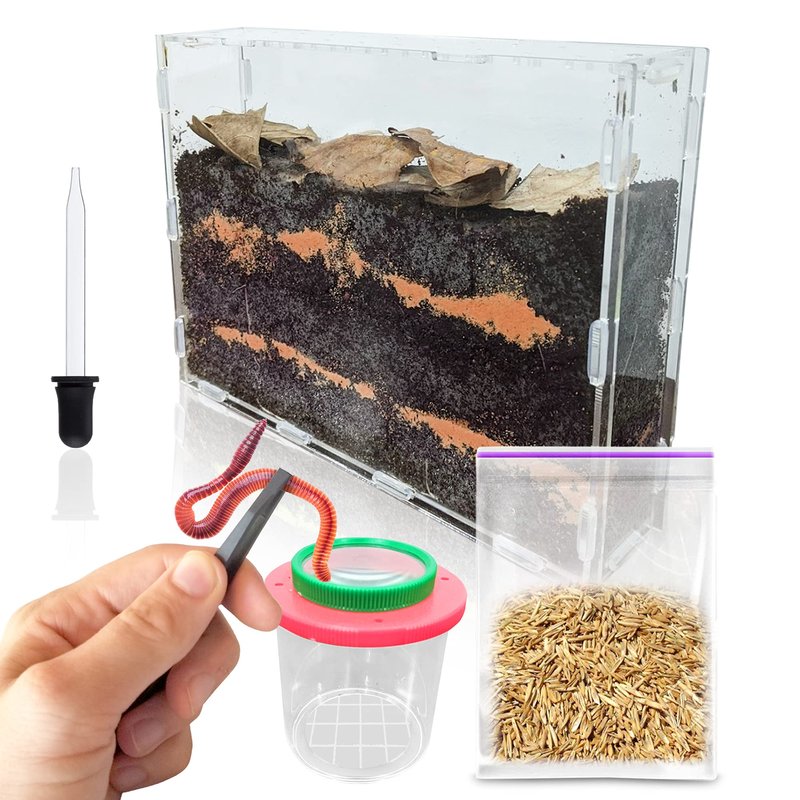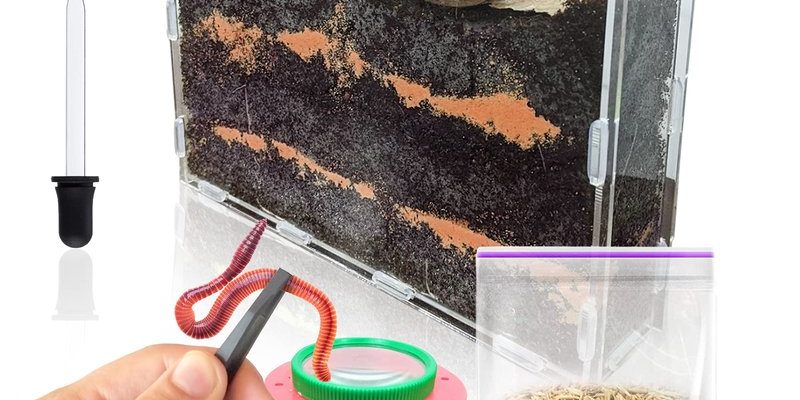
Keeping inchworms in a terrarium is like setting up a small, live science project right in your own home. You get to observe their fascinating behavior, their natural habitat, and how they interact with their environment. It’s a captivating way to learn about nature—plus, it’s easier than you might think. Not to mention, observing inchworms can be an excellent way to engage kids in biology and ecology, right from the comfort of your living room.
Understanding the Basics of Inchworms
Before we get into the nitty-gritty of keeping inchworms in terrariums, let’s understand what these little critters are all about. **Inchworms** are actually the larvae of certain types of moths, mainly from the Geometridae family. They’re called inchworms because of their distinctive way of moving: they pull in their rear end while stretching out their front, creating a characteristic “measuring” motion.
You might be wondering where these inchworms live in the wild. They can typically be found in wooded areas, gardens, and meadows, often munching on leaves. They thrive on a diet of leaves from various trees and plants, which means you’ll need to cater to their dietary needs if you plan to keep them.
Setting Up the Perfect Observation Terrarium
Creating a comfortable home for inchworms in a terrarium is easier than you might think. Start with a **clear glass or plastic container**. This not only allows you to see these tiny creatures in action but also offers ventilation if properly covered. Aim for a container that’s at least 10 gallons to give them enough space to explore.
Next, you’ll want to create a suitable substrate. **Use peat moss**, soil, or coconut coir to create a base layer. This mimics their natural environment and helps retain moisture. Adding small twigs and branches can provide the inchworms with places to climb and hide—just like in the wild. Make sure to leave some open space for them to roam around.
Diet and Nutrition for Inchworms
Feeding your inchworms is another crucial part of keeping them healthy in your observation terrarium. **Inchworms are herbivorous**, so their diet primarily consists of leaves. Common options include leaves from oak trees, apple trees, and other broadleaf plants. You should avoid using chemically treated leaves, as these can harm your inchworms.
You might be asking, “How often do they need to eat?” In general, you should provide fresh leaves every few days. Remove any wilted or decaying leaves to prevent mold or bacteria. Maintaining a clean environment is key to keeping your inchworms happy and healthy.
Climate Control for Your Terrarium
To keep your inchworms thriving, you’ll need to pay attention to the climate within the terrarium. **Temperature and humidity** play a big role in their overall health. Most inchworms prefer a somewhat humid environment, usually around 60-75% humidity. You can achieve this by misting the terrarium lightly with water a few times a week.
As for temperature, keep your terrarium in a location away from direct sunlight, as it can heat up quickly and dry out the environment. Ideally, aim for a temperature range of 65-75°F (18-24°C). If you live in a particularly dry area, consider using a small hygrometer to monitor humidity levels.
Monitoring Inchworm Behavior
One of the most enjoyable aspects of keeping inchworms in an observation terrarium is watching their behavior. Inchworms are fascinating to observe, especially when they’re munching on leaves or moving around their habitat. You might even catch them in the act of creating silk threads to help them navigate their surroundings.
Make it a point to spend some time daily observing them. You can record their movements and behaviors in a journal, which can be a great educational tool for kids and adults alike. Not only does this deepen your understanding of inchworm life cycles, but it can also spark interesting conversations about ecology and the environment.
Common Challenges and Solutions
While keeping inchworms can be rewarding, you might run into some challenges along the way. **One common issue** can be difficulty maintaining the right humidity levels. If you notice your inchworms becoming lethargic or if they start to shed their skin more often than usual, it could be a sign of insufficient humidity.
To address this, try **increasing misting** frequency or adding a small dish of water to the terrarium to boost moisture levels. Another challenge may be if your inchworms seem to be disappearing. They can be excellent at hiding, but if they’re truly gone, you may need to check for any potential escape routes in the terrarium.
When to Release Inchworms Back into Nature
After maintaining your inchworm observation terrarium for a while, you might find yourself wondering when it’s time to release them back into nature. Inchworms typically go through several stages of development before becoming moths, which is known as metamorphosis. Ideally, you’ll want to return them to their natural habitat once they reach the **pupal stage**.
Before releasing them, make sure they are healthy and have had enough time to develop properly. You can release them in a location where you originally found them, ensuring they can thrive in their natural environment. This is a great opportunity to teach kids about the **importance of conservation** and the role of wildlife in our ecosystems.
Keeping inchworms in an observation terrarium can be a delightful and educational experience. With the right setup, feeding, and care, you can observe these fascinating creatures as they navigate their miniature world. Just remember to keep an eye on their diet, maintain appropriate conditions, and enjoy the little wonders of nature unfolding right before your eyes. So, diving into the world of inchworms is not just about keeping pets; it’s about embracing a little piece of nature in your home—one inch at a time!

